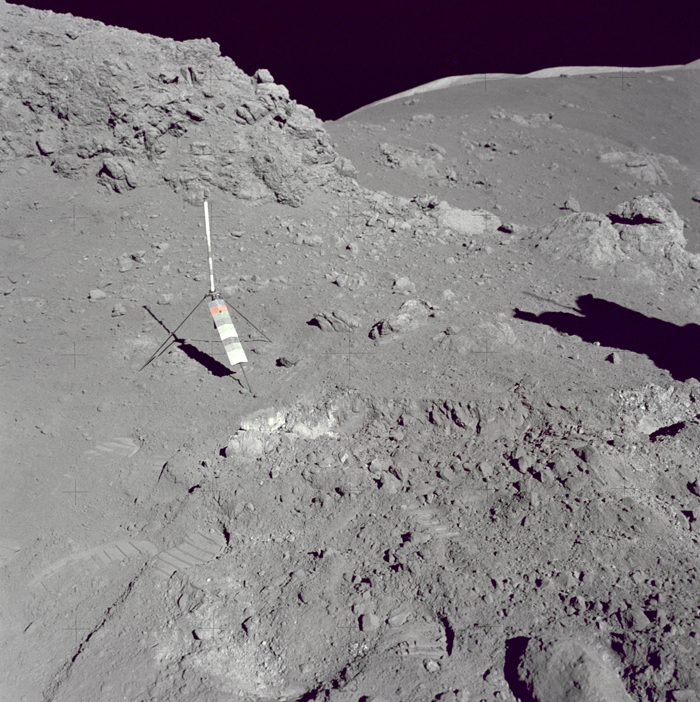Space History Photo: Orange Soil Discovery

In this historical photo from the U.S. space agency, a view of the area at Station 4 (Shorty Crater) showing the highly-publicized orange soil which the Apollo 17 crewmen found on the Moon during the second Apollo 17 extravehicular activity (EVA-2) at the Taurus-Littrow landing site.
The tripod-like object is the gnomon and photometric chart assembly which is used as a photographic reference to establish local vertical Sun angle, scale and lunar color. The Gnomon is one of the Apollo lunar geology hand tools.
Each weekday, SPACE.com looks back at the history of spaceflight through photos (archive).
Breaking space news, the latest updates on rocket launches, skywatching events and more!

The National Aeronautics and Space Administration (NASA) is the U.S. government agency in charge of the civilian space program as well as aeronautics and aerospace research. Founded in 1958, NASA is a civilian space agency aimed at exploring the universe with space telescopes, satellites, robotic spacecraft, astronauts and more. The space agency has 10 major centers based across the U.S. and launches robotic and crewed missions from the Kennedy Space Center in Cape Canaveral Florida. Its astronaut corps is based at the Johnson Space Center in Houston. To follow NASA's latest mission, follow the space agency on Twitter or any other social channel, visit: nasa.gov.
